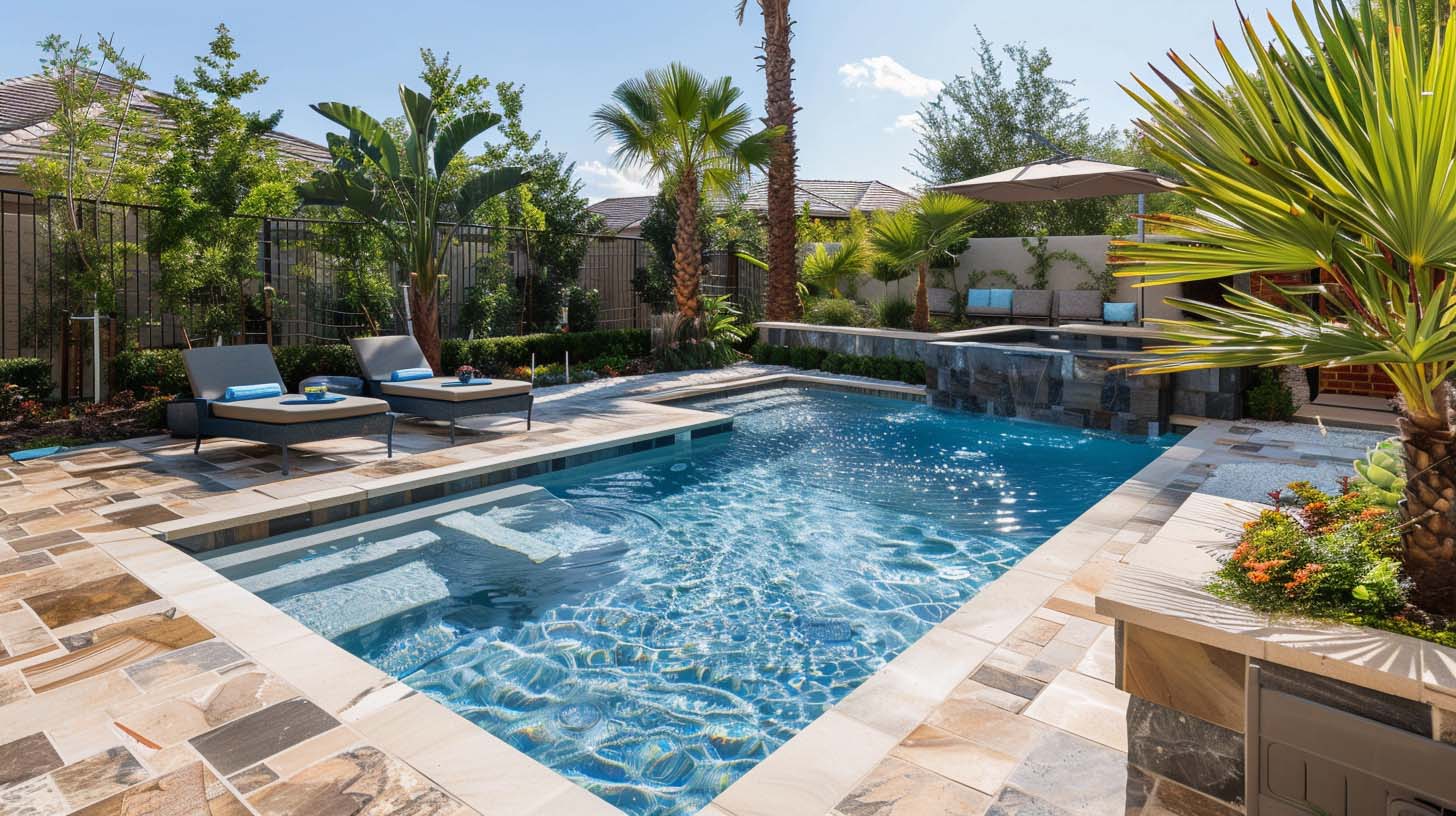A swimming pool in an outdoor living space is the ultimate backyard feature and is not just a place to swim, but ideally, the main gathering space of residents who are willing to spend more time during the warm summer. Furthermore, a pool is a strong aesthetic element of an entire garden or a yard landscape that attracts everyone's attention and creates an eye-pleasing water featuring background to the yard. The uniqueness of a pool can be enhanced by the use of different materials, design features, and night lighting.
Having a pool is a luxury as well as an expensive proposition due to its high-end detailing, quality, and cost of materials. Then it takes some time to process the design and implementing stages to create an aesthetically appealing pool yard. The style of the swimming pool should well harmonize with the existing character of the home and the surrounding landscape. Therefore, to have a calming and comforting water element in the yard, the specific site conditions such as the available land size, the shape of the land, gradient, rainfall, water table, drainage of the site, etc. should be considered.
Backyard swimming pool styles are infinite in their unique shapes and material combination, but most pool designs are rectangular or round and not too fancy with the shape. If the intended pool is not a priority for lap swimming, homeowners can get their pools to look luxurious by creating a sense of depth by adding multiple steps or pool benches, or an area for gathering. In general, two types of swimming pool designs can be seen as In-ground pools and Above- ground pools.
In-ground pool types can be practically any shape, size, or depth that best suits the desires of owners. Rectangular pools are the most popular and oval, kidney-shaped, or lagoon-style pools are alternatives for in-ground pools. The importance of this type is that it can have shallow areas for kids and deep areas for swimming. In this pool type, the edges of the pool flow well into the ground and blend seamlessly into the pavement.
Above-ground pool type offers fewer options for pool shapes, features, and depth. Round or rectangular shapes are popular with a uniform depth.
If someone has limited backyard space on their property, they also can own a pool on a lower budget.
Plunge pool is a small, typically deep pool design that can be maintained on a small budget for people who enjoy and attract to the aesthetic value of a pool and like therapeutic relaxation and sitting on the steps of a pool in the warm summer. It can be used mostly for cooling purposes and due to its size, it cannot be used for swimming. Most of the plunge pools are rectangular to increase the usable space. Half-circle, round, or L- shaped plunge pool designs are also popular in standard sizes.
Four major types of pool design styles can be identified as Modern, Mediterranean, Traditional, and Tropical, and these design ideas can be varied with different inspirations of natural swimming pools, lap pools, spas, or pool houses.
Modern pools are characterized by their pure geometric shapes and the eye-catching color scheme of the pool tiles. These types of pools are distinguished by their simple shapes.
Mediterranean pools are famous for their watercolor and shapes of the Greek and Roman cultures. It is accenting by colorful ceramic tiles, stone decks, and waterfall features.
Traditional pools are more common and can be seen in the usual classic rectangular or kidney shapes. Typically the pool water emphasizes the watercolor of natural lakes or ponds, and most pools are distinct with brick or paving stones or natural stones.
Tropical pools provide a tranquil and relaxing atmosphere to a backyard with tropical lush plants, boulders, waterfalls, and decorative tropical motifs at the bottom of the pool.
If the desired pool does not require a hard surface around the pool, it can be softly blended with softscape edging using planting or grasses. But choosing the right plants for the pool surrounding is a bit challenging and have to choose wisely because plantings around the pool surroundings can severely affect due to the humidity levels, the water reflected intensifies sunlight, and chlorine-like chemicals. Growing plants around a swimming pool can add privacy, and create a serene landscape. But it should avoid the plants that attract bees, plants with spikes, or large leaves trees. Therefore, the selection of hardy pool plants like succulents, shrubs, vines, ornamental grasses, or ground covers are important for plant survival and to ensure that the pool is easy to maintain, safe, and making a sense of place.
By Malithi Ranatunga
References:
https://www.landscapingnetwork.com/swimming-pool/styles.html
https://www.dimensions.com/collection/swimming-pool-layouts
https://www.gardenista.com/garden-design-101/hardscape/swimming-pools-design-guide/
Pool Design Types for Your Backyard
Share this article:
